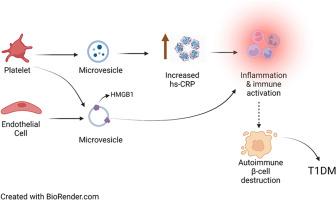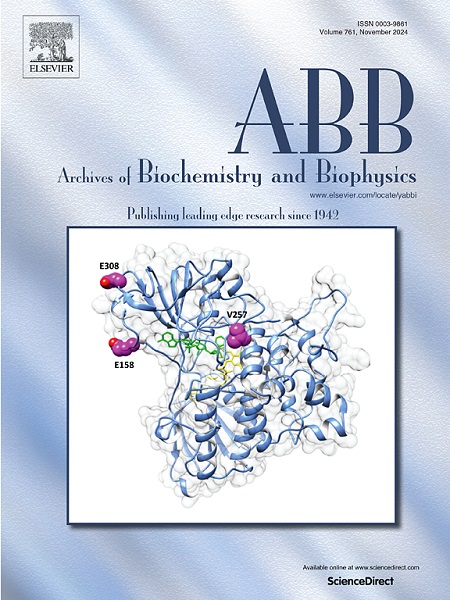Pathogenic mechanisms, diagnostic, and therapeutic potential of microvesicles in diabetes and its complications
IF 3.8
3区 生物学
Q2 BIOCHEMISTRY & MOLECULAR BIOLOGY
引用次数: 0
Abstract
Extracellular vesicles (EVs), particularly microvesicles (MVs), have gained significant attention for their role as mediators of intercellular communication in both physiological and pathological contexts, including diabetes mellitus (DM) and its complications. This review provides a comprehensive analysis of the emerging roles of MVs in the pathogenesis of diabetes and associated complications such as nephropathy, retinopathy, cardiomyopathy, and neuropathy. MVs, through their cargo of proteins, lipids, mRNAs, and miRNAs, regulate critical processes like inflammation, oxidative stress, immune responses, and tissue remodeling, all of which contribute to the progression of diabetes and its complications. We examine the molecular mechanisms underlying MVs' involvement in these pathological processes and discuss their potential as biomarkers and therapeutic tools, particularly for drug delivery. Despite promising evidence, challenges remain in isolating and characterizing MVs, understanding their molecular mechanisms, and validating them for clinical use. Advanced techniques such as single-cell RNA sequencing and proteomics are required to gain deeper insights. Improved isolation and purification methods are essential for translating MVs into clinical applications, with potential to develop novel diagnostic and therapeutic strategies to improve patient outcomes in diabetes.

糖尿病及其并发症中微囊泡的致病机制、诊断和治疗潜力。
细胞外囊泡 (EVs),尤其是微囊泡 (MVs),因其在生理和病理情况下(包括糖尿病 (DM) 及其并发症)作为细胞间通信介质的作用而备受关注。本综述全面分析了中微粒在糖尿病及其相关并发症(如肾病、视网膜病变、心肌病和神经病变)的发病机制中新出现的作用。中膜通过其所携带的蛋白质、脂类、mRNA 和 miRNA 调节炎症、氧化应激、免疫反应和组织重塑等关键过程,所有这些过程都会导致糖尿病及其并发症的恶化。我们研究了中微粒参与这些病理过程的分子机制,并讨论了中微粒作为生物标记物和治疗工具(尤其是药物输送)的潜力。尽管证据令人鼓舞,但在分离和表征中空蛋白、了解其分子机制以及验证其临床应用方面仍存在挑战。需要采用单细胞 RNA 测序和蛋白质组学等先进技术才能获得更深入的见解。改进分离和纯化方法对于将中微粒蛋白转化为临床应用至关重要,有望开发出新型诊断和治疗策略,改善糖尿病患者的预后。
本文章由计算机程序翻译,如有差异,请以英文原文为准。
求助全文
约1分钟内获得全文
求助全文
来源期刊

Archives of biochemistry and biophysics
生物-生化与分子生物学
CiteScore
7.40
自引率
0.00%
发文量
245
审稿时长
26 days
期刊介绍:
Archives of Biochemistry and Biophysics publishes quality original articles and reviews in the developing areas of biochemistry and biophysics.
Research Areas Include:
• Enzyme and protein structure, function, regulation. Folding, turnover, and post-translational processing
• Biological oxidations, free radical reactions, redox signaling, oxygenases, P450 reactions
• Signal transduction, receptors, membrane transport, intracellular signals. Cellular and integrated metabolism.
 求助内容:
求助内容: 应助结果提醒方式:
应助结果提醒方式:


